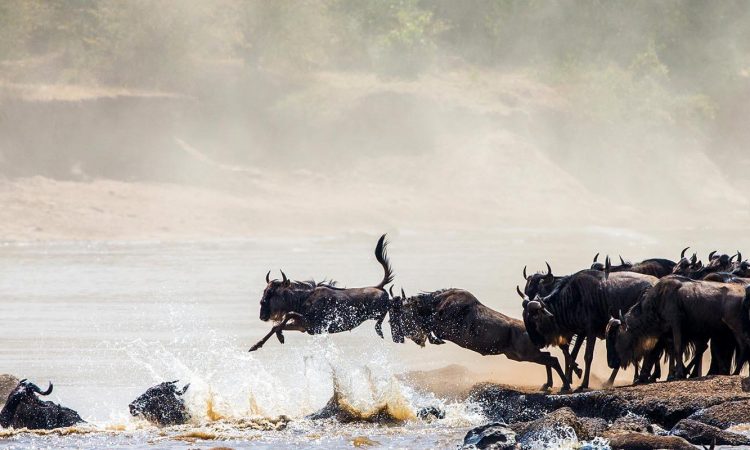Welcome to Kenya and each year, almost two million wildebeest and 20 000 plains game migrate from Tanzania’s Serengeti to the south of Kenya’s Masai Mara in search of lush grazing grounds and life-giving water. This treacherous Odyssey is dictated by the seasons and where the rains are, the wildebeest are not far behind. This epic Kenya tour journey from north to south spans almost 3000 kilometers and is virtually endless.
This great spectacle of nature is an iconic safari option for avid travelers, nature lovers and those who want a little more from their African experience. Rather than having a start or endpoint, the Great Migration moves rhythmically in a clockwise direction, making herd tracking unpredictable.
The wildebeest migration is one of the most amazing events one should never miss out, nothing is thrilling like watching the these animals in big numbers running up and down in the grasslands and crossing rivers, it gives an unforgettable experience in the wild.
Wildebeests are mammals and belong to the antelope family, and it is estimated that there are about one and a half million (1.5 million) wildebeests that take part in this migration. Obviously, they’re not just taking a long walk for the fun of it. The Great Migration is triggered by the dry season, which can run from any time between June and October. That the animals have been spotted early this year in the Mara means the dry season has started. During the dry season, other bodies of water in the Serengeti dry up, leaving the only other source of water for the animals in the Mara River.
From January to March, these wildebeest migration can be viewed comfortably at a mobile camp, though most mobile camps are faced with the issue of flies so clients who are in for camping are advised to go in for Lake Masek Tented camp, then also mid range travelers can opt for Ndutu lodge as they observe the migration. Those who are into the luxury basis can go for Mwiba lodge.
In April, there is a possibility of observing the migration and the better place to stay would be Kusini Camp but there are many tsetse flies so the other option would be Ndutu Safari lodge.






Add Comment